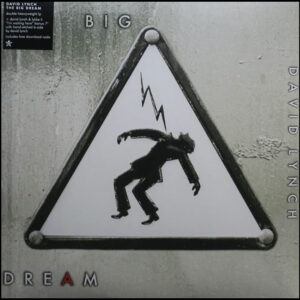A Tribute to David Lynch: The Architect of Dreams
David Lynch is not merely a filmmaker; he is an architect of the subconscious, a weaver of dreams, and a poet of the uncanny. In a world that often demands clarity and resolution, Lynch dares to embrace the shadows, the silences, and the strange beauty of the unknown. His work is not just watched; it is felt—seeping into the cracks of our psyche, lingering in the recesses of our thoughts long after the screen goes dark.
Born in Missoula, Montana, in 1946, Lynch’s creative journey has been anything but conventional. His childhood, filled with the idyllic charm of small-town America, would later serve as a recurring backdrop in his work—a backdrop that conceals the sinister underbelly of human nature. This duality of light and dark, of innocence and corruption, would become the cornerstone of his artistic vision.
Lynch’s early fascination with painting laid the foundation for his cinematic aesthetic. As a student at the Pennsylvania Academy of the Fine Arts, he explored the boundaries of visual storytelling, experimenting with texture, abstraction, and emotion. It was during this time that Lynch began to merge his love for painting with the moving image, resulting in his first filmic experiment, *Six Men Getting Sick (Six Times)*. This blend of mediums hinted at the larger-than-life visions that would later define his career.

PHOTO BY RICHARD DUMAS / AGENCE VU/REDUX
His feature debut, *Eraserhead* (1977), announced Lynch as a singular voice in cinema. A surreal and haunting meditation on fear, parenthood, and isolation, the film defied categorization. It was both a nightmare and a symphony, a work of art that defied explanation yet resonated deeply with audiences willing to embrace its strangeness. The black-and-white industrial wasteland of *Eraserhead* was not just a setting but a state of mind, a reflection of Lynch’s ability to externalize the inner turmoil of his characters.
What makes Lynch’s work so profoundly affecting is his courage to confront the duality of existence. He captures the beauty and horror of life in equal measure, often within the same frame. His characters, from the wide-eyed innocence of Sandy in *Blue Velvet* to the enigmatic Laura Palmer in *Twin Peaks*, embody this duality. They are fragile yet resilient, victims and heroes, navigating worlds that are as perilous as they are mesmerizing.
Lynch’s ability to evoke emotion is unparalleled. A single image—a flickering streetlight, a red-curtained room, or a diner at midnight—can evoke a cascade of feelings: nostalgia, dread, wonder, or sorrow. His use of sound is equally masterful, turning ambient noise and unsettling drones into characters of their own, amplifying the tension and mystery that permeate his stories. Angelo Badalamenti’s haunting scores, often created in collaboration with Lynch, are integral to this emotional tapestry, their melodies as evocative as the images they accompany.
Yet, beneath the surrealism and the terror, there is a profound humanity in Lynch’s work. He has an unyielding empathy for his characters, no matter how flawed or fractured they may be. He understands that within every monster lies a fragment of humanity, and within every saint, a shadow of darkness. It is this understanding that makes his work so deeply relatable, even as it defies explanation.
*Twin Peaks*, perhaps Lynch’s most celebrated creation, is a testament to his genius. The show’s small-town setting and eccentric characters quickly captured the world’s imagination, but it was the haunting mystery of Laura Palmer’s death that gave the series its enduring power. Through Laura, Lynch explored themes of trauma, innocence lost, and the battle between good and evil. Her story became a microcosm of the human condition, her fate a reminder of life’s fragility and resilience.
Beyond his films and television work, Lynch’s artistic legacy extends into music, painting, and even meditation. He is a Renaissance man for the modern age, channeling his boundless creativity into every medium he touches. His music, often experimental and otherworldly, echoes the surreal landscapes of his films. His paintings, dark and abstract, reveal a raw and visceral side of his artistry. Through his David Lynch Foundation, he has brought the healing power of Transcendental Meditation to countless individuals, further demonstrating his commitment to exploring the depths of human potential.
Lynch’s personal philosophy is as compelling as his art. He approaches life with a childlike curiosity, finding inspiration in the mundane and the mysterious alike. His mantra of “the art life” reflects his belief in the transformative power of creativity. For Lynch, art is not just a career but a way of being, a means of connecting with the deepest parts of ourselves and the world around us.
David Lynch is not just a filmmaker; he is a dreamer who invites us to dream with him. He challenges us to look beyond the surface, to embrace the mysteries of life, and to find beauty in the most unexpected places. His work reminds us that the world is not as it seems, that the most profound truths often lie in the spaces between words, in the flicker of a shadow, or the hum of electricity in the night.
Thank you, David Lynch, for daring to be different, for embracing the weird and the wonderful, and for giving us the courage to do the same. You have shown us that art is not just a reflection of life but a portal to deeper understanding—a reminder that even in the darkest corners of our minds, there is light, waiting to be found.
You are, and forever will be, the maestro of the surreal, the poet of the mysterious, and the fearless explorer of the human soul.




